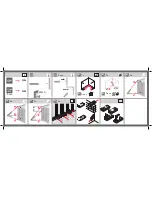
UNION Instruments GmbH
INCA Analyzer Series
– Instruction Manual
Page 10 of 59
General description
3
G
ENERAL DESCRIPTION
The INCA Analyzer Series offers a group of gas measurement instruments to analyze gas
compositions in different applications such as the production of biogas, raw biogas, poor gas
and bio-methane. With their capability to measure gas components such as CO
2
, CH
4
, C
2
H
6
,
O
2
, H
2
S, H
2
, specific gravity and additional calculated values of the gas, the INCA Analyzer
Series can be applied in biogas plants for monitoring, optimization and evaluation of
biological processes.
The analyzer is designed as a modular system. It can be equipped with different sensors
selectable from a list as the analyzer is ordered. The customers are able to order a specific
INCA Analyzer with specific number, range and accuracy of the sensors. Gas conditioning
systems including gas cooler is also optional. Please see list of the available sensors.
3.1
Functionality
3.1.1
Phases of the analyzer
The measurement principle of the standard analyzer consists of four phases in an adjustable
cycle.
Phases
Description
Purge gas
Purge gas (usually air) is pumped through the system to clean out the
pipes from process gas of previous measurement and to moisturize the
electrochemical sensors to increase their lifetime.
Condensate drain
If system has a gas cooler the pump will run during that cycle to drain
the condensate from the gas cooler. For this purpose the system is
either equipped with a hose pump or an ejector using compressed air.
Change channel
The analyzer starts to run the process gas of the active channel
(maximum of 10 channels are available depending on system
configuration) through the system. This allows the pumps to build up
pressure and also for the process gas to reach the sensor before the
measurement is started.
Pressures of the pumps are checked and errors are stored if minimum
pressures are not reached.
Measurement
The sensors are exposed to the process gas and measurement is
performed. At the beginning of this cycle the pumps inside the analyzer
are calibrated. At the end of the cycle the measured values are stored in
memory.
Table 1: Measurement phases
Note
Continuous measurement analyzers do not operate in this cycle scheme.
See Figure 3-2.











































